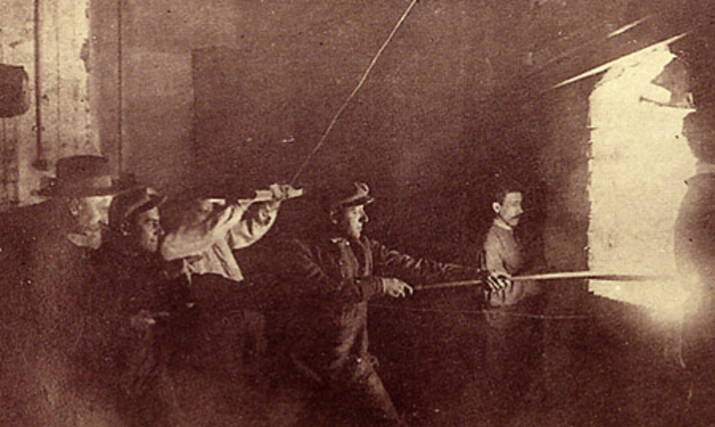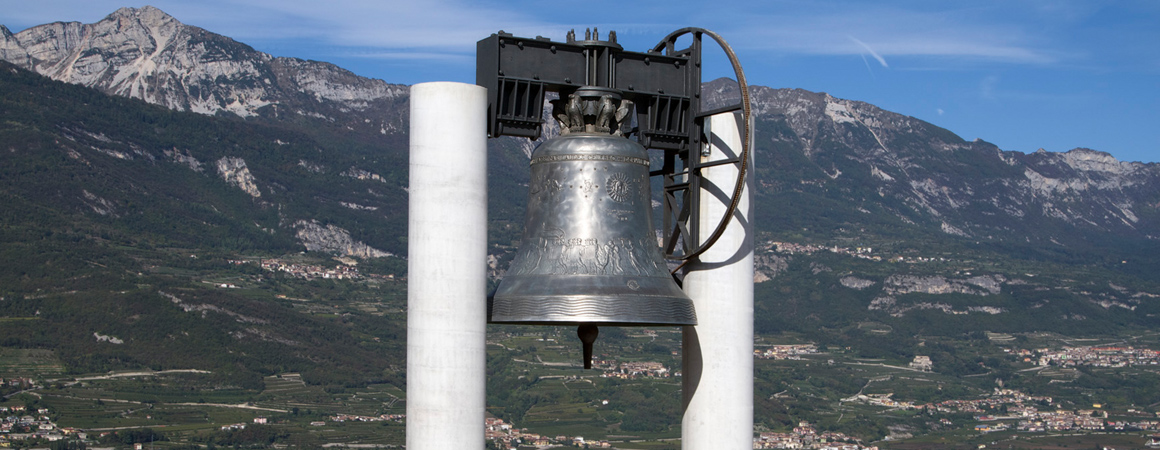FOR WHOM THE BELL TOLLS - P18
You cannot call a place for Peace 'Valscodella', it does not work. That is why when the Presidency unanimously decided on 7 June 1962 to purchase land to relocate the Bell, it changed the name of the area to Miravalle. The space was, and still is, on the slopes of the Castel Dante hill. A symbolic and strategic choice that marked the desire to renew the mission of Maria Dolens, moving her away from the Malipiero bastion, where she had originally been placed. The municipal council approved the transfer of the land on 23 October, at the same time as contacts were initiated with the province for a new road access. The news sparked controversy. Some saw the move as a betrayal of the original project of Don Antonio Rossaro, who had wanted the Bell in the heart of the city. But the urban context had changed: Rovereto had expanded, Miravalle no longer appeared as a peripheral location and seemed an ideal space to host international events.
Father Iori strongly defended the new vision: a 'Piazzale delle Genti' was to be created, a space open to the encounter of peoples, a symbolic place for Peace and brotherhood. Not without some discontent, don Rossaro's family also supported the change. Renato, the founder's nephew, stated in a statement in March 1961 that the Presidency's work was a natural evolution of his uncle's thinking. But the opposition did not subside. In 1965, a 'Committee of Gratitude to Don Rossaro' was even formed, denouncing the move as a disrespectful act.
The Presidency responded with a public statement, reaffirming the legitimacy of its actions. After all, the members of the governing body of the Bell were appointed by the founder himself, and no document bound Maria Dolens to a fixed location.
The controversy did not subside, there was only one way to cover up that background noise, to go back and listen to Maria Dolens' voice, which had remained silent for too long. On 1 October 1964, the third casting took place at the Capanni foundry in Castelnuovo. The bronze was poured into the mould in complete silence; there had been too many disappointments in the past. At the end of the process, a bronze giant emerged, weighing 22,639 kilograms, with a height and diameter of 3.36 and 3.21 meters respectively, a clapper weighing 600 kilograms, and a yoke of 10,300 kilograms. The new Bell was born, the largest bell in the world rung out in the open air. Made with the original bas-reliefs by Stefano Zuech, the Maria Dolens had a more sober appearance than its predecessors: with the internal inscriptions removed, only the words of Pius XII and John XXIII remained alongside the poetic verses engraved by the foundryman.
A new era had begun, ours.







